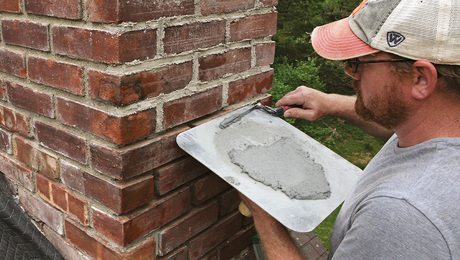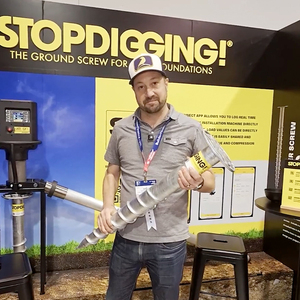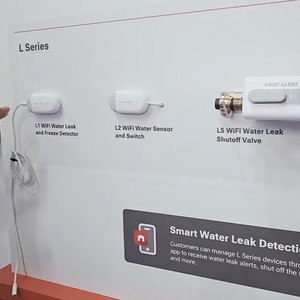condensation point in a wall
I have a fairly esoteric question and I preface by saying that I am not a builder. I live in a colder climate (for part of the year). My question is with respect to vapour barrier and insulation.
My understanding of heat management in a structure that warm (and generally more humid air) must be stopped from meeting cold materials or surfaces – to prevent condensation from forming. After thinking about this for a while I have a couple of unanswered questions.
If the vapour barrier is to physically prevent warm air from meeting cold surfaces, how does it do this? If the VB is applied inside of the insulation layer and outside of the drywall, does the warm air on the drywall side still not see cooler surface on the insulation side? I don’t understand how the VB changes the relationship. If warm air sees a VB that is in anyway cooler, should condensation not form on the VB – and hence under the drywall? This seems logical but I don’t get it in practice.
Secondly, is it possible to prevent warm interior air from ever meeting a cold surface – but having a wall that is thicker, better insulation, not thermal breaks etc? In this scenario if there is a warm side, a neurtral core or central zone and a cold zone, would condensation ever form anywhere in the wall? Would a VB then be necessary?
I have seen a wall structure (Toronto Globe and Mail, about a month ago) where there were 2 wall layers. The outer layer was insulated. The vapour barrier was betweeen the 2 wall layers. The inner wall was also insulated and contained all of the wiring etc – in this way the vapour barrier was never penetrated by switches etc. It seemed logical but does the possbility exist that a dewpoint would be formed between the two walls on the warmer side of the vapour barrier?
I need to get a life I think.
Mark MacLeod



















Replies
"If the VB is applied inside of the insulation layer and outside of the drywall, does the warm air on the drywall side still not see cooler surface on the insulation side?"
Not really. As long as the condensing surface (the poly VB) is above the dewpoint of the air, you will not have condensation. Since the only "insulation" between the VB and the conditioned interior is drywall, the temperature of the poly VB will be very close to the interior temperature.
"Secondly, is it possible to prevent warm interior air from ever meeting a cold surface - but having a wall that is thicker, better insulation, not thermal breaks etc?"
Sure, you can stop air infiltration. You also have to watch diffusion, though. Diffusion cannot trasmit as much moisture as air infiltration can, but it can be enough to cause problems in some climates. This is why closed cell foams (installed properly) have so many fans. The air infiltration and diffusion are practically nil.
"I have seen a wall structure (Toronto Globe and Mail, about a month ago) where there were 2 wall layers. The outer layer was insulated. The vapour barrier was betweeen the 2 wall layers. The inner wall was also insulated and contained all of the wiring etc - in this way the vapour barrier was never penetrated by switches etc. It seemed logical but does the possbility exist that a dewpoint would be formed between the two walls on the warmer side of the vapour barrier?"
Yes, that possibility needs to be addressed. If you have an 80° delta (-10° exterior, 70° interior), the vapor barrier center of a wall with equal insulation on both the warm and cold side would be approximately 30° (I say approximately because I'm sure there's some scientific principle that I don't understand that says that the center will not be exactly halfway, but I'm pretty confident it's close) and condensation will likely occur unless you have an uncomfortably low interior relative humidity.
Jon Blakemore
RappahannockINC.com Fredericksburg, VA
Hi Mark. Moisture will not condense on a surface unless that surface is as cold or colder than the dew point. Dew point is the lowest temperature at which moisture will begin to condense out of the air. As air gets colder it holds a lesser volume of moisture. As it gets warmer air can hold a larger volume of moisture. Watch your local weather station and they will give you the dewpoint. You can measure it yourself with a sling pyschrometer (Hope I spelled that right) and a psychometric chart.
A helpful link is http://www.erl.dot.state.ia.us/Oct_2008/IM/content/378.pdf
The interior side of your insulation will not (Or should not) see the dew point because you heat your house. The Delta Temp between the drywall and insulation face is minimal. Hope that answers your question.
Yeah ... what they said.
As moist warm air in the house moves through a wall, the temperature drops. If it sees a surface that is below its dewpoint temperature, it will condense. This normally will happen near the exterior wall (e.g. the inside surface of the exterior sheathing).
The dewpoint temperature depends on the current temperature and the current relative humidity (RH) of that air. You can get condensation on the interior surface ... I've seen it many times. It gets very cold out, there is little air movement on the interior surface (e.g. in a closet) and your lifestyle is lots of plants ... humidity goes up, the surface temp drops, and you get condensation.
I've seen this happen with modern energy efficient houses ... in fact that is where I've seen it most. Why? Because the extra attention to air sealing tends to seal in air and humidity. And unless you ventilate to control humidity properly, the humidity rises ... and so does the dew point temperature. On a cold day, your wall surface may be easily 5 degrees lower than room temp (depends on your insulation).
You can calc the surface temp at each place in a wall under a static condition (which really doesn't happen, but we come close). At a given interior temp and relative humidity, you can estimate the theoretical point of condensation.
Vapor barriers slow down the transmision of moisture through the construction. Actually we now say 'vapor retarders', not 'barriers' as they are not barriers a common misnomer. As the one poster said, you can use a psychrometric chart (ugh) to determine the dewpoint temp at any given current temp and RH. That is why you can see morning dew on your cold metal car, but not always on your house exterior wall surface (which is warmer than your car).
"That is why you can see morning dew on your cold metal car, but not always on your house exterior wall surface (which is warmer than your car)."Sometimes the dew seen on the car is just on the surfaces facing a clear and cold night sky, and not on the sides. The sides radiate heat away, but other objects are radiating heat back toward them, so there isn't much cooling below ambient air temperature. The sky-facing surfaces radiate heat away also, but there isn't anything "up there" radiating heat back, so the temperature of those surfaces can be measurably cooler than ambient air temp.Same effect, though. Cooler surface will cause condensation of humidity from the air before a warmer one will.
You're missing an important detail: A vapor barrier is to keep MOISTURE from reaching a point in the wall where that moisture will condense.
(Note: Below I'm talking about heating season. Conditions are reversed for parts of the country with a prolonged cooling season and high outside humidity.)
Folks tend to think of warm air as being moist and cold air as being dry, but that's not the way it works. Air in a well-sealed house in winter becomes moist due to breathing, cooking, showers, etc, and sometimes explicit moisturization with a humidifier. (And, BTW, it does not become drier due to using a gas furnace vs "wet" hot water heat. Heating the air doesn't change its absolute moisture content.) If it weren't for these (moisture producing) factors, the warm air in a house would contain the same amount of moisture (in molecules per volume of air) as the air outside (though the air inside would have a lower RELATIVE humidity due to its warmer temperature).
Relative vs absolute temperature is the issue here. If you take some warm moist air at, say, 70 degrees and 40% relative humidity, lowering the temperature will raise the relative humidity. When the temperature gets to about 45 degrees, the relative humidity reaches 100%, meaning that moisture in the air will condense into a fog, and collect on any solid surface nearby.
With a typical wall of drywall, fiberglass insulation, and fiberboard sheathing, the temperature gradient across the wall will be fairly steady -- high temperature on the inside, lowering at a reasonably steady rate until one reaches the outside. The absolute humidity gradient will be less uniform -- significant drop across the drywall, very little drop through the fiberglass (which lets moisture flow freely), and then another significant drop across the sheathing -- but you can still figure that the absolute humidity midway through the wall will be approximately an average of the level on the inside of the house and the level on the outside.
You can predict a condensation problem by plotting the temperature and dew point (measure of absolute humidity) at various points across the thickness of the wall. If at some point the temperature is lower than the dew point then condensation will occur at that point.
The vapor barrier works by preventing moisture from crossing. This means that the humidity in the air takes a sudden dip at the vapor barrier and then decreases very little (because there is very little decrease to be had) as you travel across the remaining width of the wall. In most cases (of a well-sealed vapor barrier) the dew point at the outside-facing surface of the barrier will be below the outside temperature and so you're well-assured that condensation will not occur.
Thanks everyone for the comments - this is alot more technical than I have thought in the past.I have a related question. How difficult is it to ensure that the vapour barrier or retarder is actually sealed? With all of the perforations that come - electrical boxes and plumbing - do vapour barrier breaks result in condensation forming at those defects? What if any are the advantages of a double wall construction with the vapour barrier sandwiched between 2 walls where there are no breaks in the barrier? Or is this just crazy thinking of a Canuck?Mark
There are definite advantages to having some sort of double wall, but even without it's not that hard to get a good seal.First off, if possible buy electrical boxes (or the box surrounds) with the flange on them for sealing to the VB. Lacking that just take care taping the VB to the box. But before installing the VB, get some "duct seal" (electrician's putty) and use bits of it to seal all the openings in the boxes, working from the back. For really "holey" boxes roll out a thin sheet of duct seal (use a pastry roller or pasta press) and mold it around the back of the box.For pipes get a piece of thin plywood maybe 2-3" square and drill a tight-fitting hole in the middle. Put a donut of duct seal on the pipe, slide on the plywood, and tape the VB to the plywood.
The mark of the immature man is that he wants to die nobly for a cause, while the mark of a mature man is that he wants to live humbly for one. --Wilhelm Stekel
I think it is probably impossible to get a perfect seal, and in practice, it is difficult, but enitrely doable, to get a reasonable seal. The best approach is to implement best practices to get a good seal, but more importantly, interior moisture levels MUST be managed via mechanical ventilation (humidistatically controlled of course). Many builders and homeowners completely fail on the matter of mechanical ventilation which is why we see and hear so much about mold and rot.